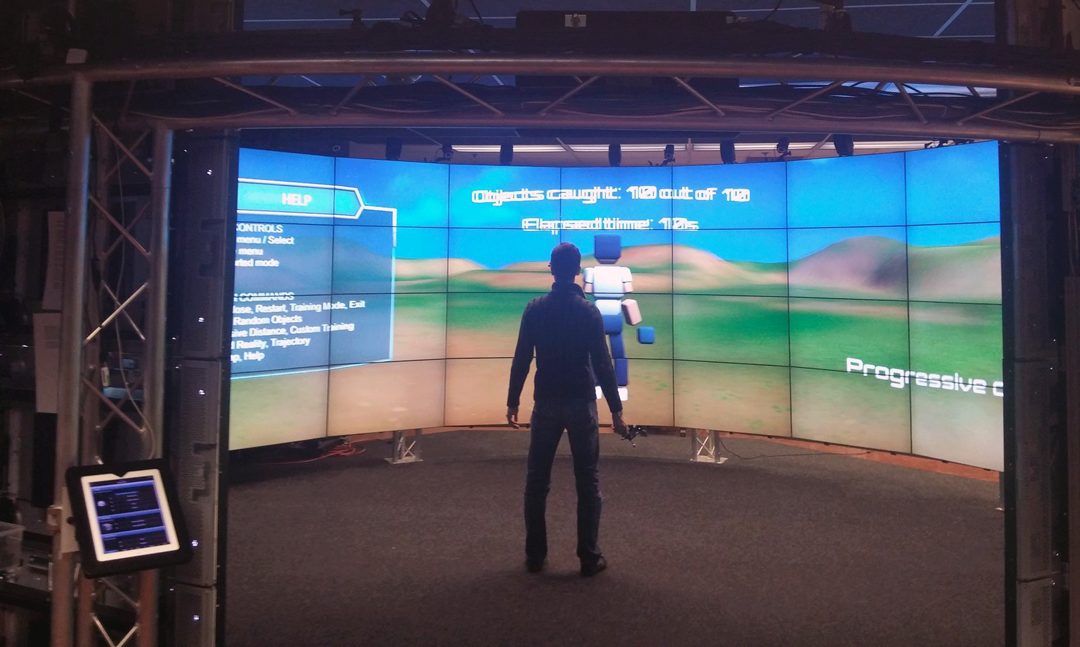RehabJim: A Third Person Approach To Virtual Reality Biomechanical Rehabilitation
January 1st, 2016 - May 1st, 2016
Categories: Applications, Virtual Medicine, VR

About
Patients come to Centers for Physical Therapy and Rehabilitation from all over the globe, “often with catastrophic or unusual conditions and always with great hope for an improved life ahead”. In the quest to assist these patients, Virtual Rehabilitation is becoming popular in clinical research thanks to the development and availability of new immersive technologies. For example, the rehabilitation of post-stroke patients frequently uses virtual reality, and sometimes employs a first-person Serious Games approach to make therapy more enjoyable for patients. In such approaches, the patient experiences the virtual environment in a first-person view.
Unlike the existing body of work, we present and evaluate an immersive virtual rehabilitation application which uses a third person perspective: the patient controls with her body a 3D avatar. The application was commissioned by biomechanics researchers at a major center for rehabilitation research, and could be used to compare the learning-curve and time needed for rehabilitation across different therapies and environments. One of the main challenges in this work is the design of simple, non-distracting avatars and virtual world, which allows the patient to focus on performing correctly the rehabilitation exercises. An additional challenge comes from the trade-offs typically associated with virtual reality, for example, loss of depth perception.
Our solution, RehabJim, is a third-person serious game for the rehabilitation of upper limbs in post-stroke patients, with particular emphasis on reaching movements. Our solution uses a state-of-the-art virtual reality environment, Unity 3D, and a Kinect controller in the CAVE2™ Hybrid Reality Environment.